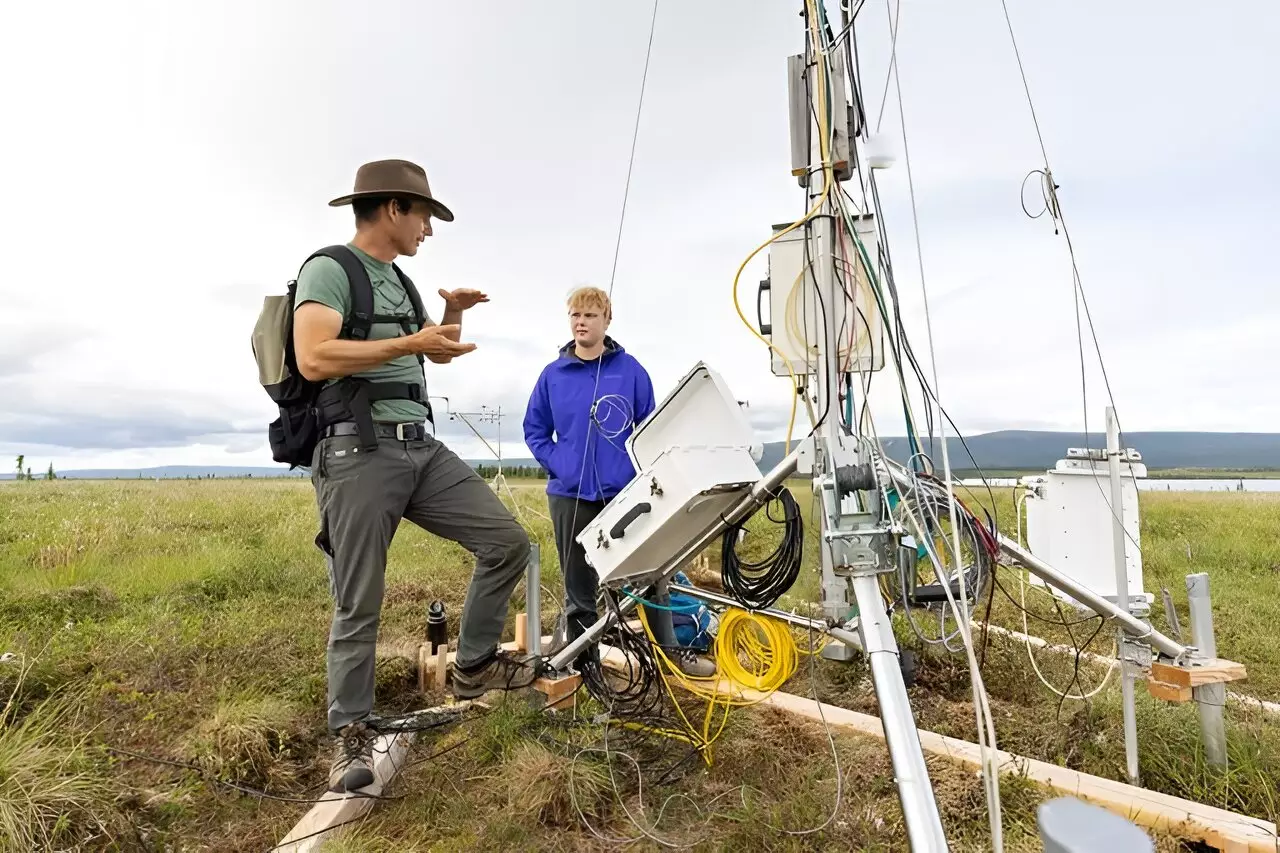Recent studies spearheaded by Ted Schuur, a Regents’ professor of biological sciences at Northern Arizona University, delve into the alarming biological dynamics of the rapidly warming Arctic tundra. These findings highlight a vital concern: the northern circumpolar permafrost region, while covering only 15% of Earth’s soil area, is an astonishing reservoir that stores approximately one-third of the world’s soil organic carbon. This unique ecosystem’s resilience is being tested like never before in the wake of climate change—a phenomenon that is transforming its role from a carbon sink to a potential carbon bomb.
As temperatures in permafrost ecosystems rise three to four times faster than the global average, scientists are increasingly concerned by the accelerated rates of carbon cycling and respiration—processes that release greenhouse gases into the atmosphere. These emissions threaten to amplify climate change significantly, perhaps contributing an additional 10% to 20% to future global warming. The urgency of addressing this phenomenon is not just a scientific matter; it is fundamentally a question of our ecological fate.
Carbon Cycling Dynamics: A Complex Interplay
Carbon dynamics in northern ecosystems are governed by complex biological processes. Photosynthesis pulls carbon dioxide from the air and stores it in plant biomass, but this is counteracted by ecosystem respiration, which releases carbon back into the atmosphere—particularly during decomposition in warmer months. Schuur and collaborators have meticulously gathered and analyzed decades worth of carbon flux data from a broad spectrum of ecosystems, including both permafrost and non-permafrost areas.
Significantly, their research, detailed in the journal *Nature Climate Change*, highlighted that while non-permafrost ecosystems benefit from increased summer plant growth, this is not the case for permafrost systems. Unexpectedly, these ecosystems now show a substantial seasonal net loss of carbon during the fall and winter months, a stark reminder of how rising temperatures disrupt established ecological balances. The findings underline a disturbing trajectory—permafrost regions are increasingly contributing more carbon to the atmosphere than they can sequester in the warmer months.
Experimental Insights into Future Warming Effects
The challenges of understanding the Arctic’s future are not trivial. In a pivotal experiment discussed in a separate *Nature* article, Schuur’s team utilized miniature greenhouses to simulate predicted warming scenarios, revealing that a minimal increase in temperature can trigger dramatic increases—of up to 30%—in ecosystem respiration. Localized environmental factors such as water and nutrient availability further complicate these dynamics, revealing significant site-by-site variability that suggests a non-uniform response to warming across the broader permafrost landscape.
These data points serve not merely as academic insights; they provide crucial knowledge that should inform policy discussions and guide global emission reduction strategies. As global warming threatens to unleash centuries’ worth of stored carbon, shoring up our collective understanding of these processes becomes a priority that cannot be overlooked.
A Need for Global Policy Revisions
As concerning as these findings are, they reveal a glaring oversight in our current climate strategies. The emissions anticipated from permafrost thawing are not sufficiently factored into the targets established by the Paris Agreement. If nations worldwide are to meet their climate commitments, they must adopt more ambitious carbon reduction goals that account for the looming risks presented by permafrost degradation. This lack of integration makes it evident that our climate agreements are inadequate against the backdrop of rapidly changing environmental realities.
Schuur emphasizes that the research undertaken sheds light on how Arctic ecosystems are poised to exacerbate climate change through the release of greenhouse gases such as carbon dioxide and methane. Without immediate recognition of this emerging crisis, global efforts to combat climate change may fall far short of achieving intended outcomes.
The Research Landscape Amid Geopolitical Challenges
Adding complexity to the research landscape are geopolitical tensions, such as the recent disruptions caused by the Russian invasion of Ukraine. Schuur’s studies highlight the ramifications of losing access to pivotal permafrost sites that represent a significant portion of Arctic landscape variability. The reduction of monitoring sites curtails our understanding of critical carbon fluxes, something that could severely hamper effective climate response initiatives. Despite the logistical hurdles of establishing new monitoring sites in North America, these efforts are crucial if scientists hope to regain invaluable data lost due to international conflict.
In this landscape of uncertainty and climatic upheaval, one thing becomes exceedingly clear: the research into permafrost ecosystems is no longer just an academic endeavor but a global necessity. Understanding these environments and their responses to climate change is vital if we hope to mitigate an impending crisis that affects us all.
This ongoing dialogue in the scientific community serves as a clarion call, urging not only researchers but policymakers to rethink how we address climate targets, where we place our data-gathering efforts, and how we react to the evolving narrative of our planet’s ecosystems. Time is of the essence, and our proactive measures—or lack thereof—will determine the fate of both Arctic ecosystems and global climate stability.


Leave a Reply